For serious tarnish, Wright’s is more effective — but also more abrasive — than Bistro.
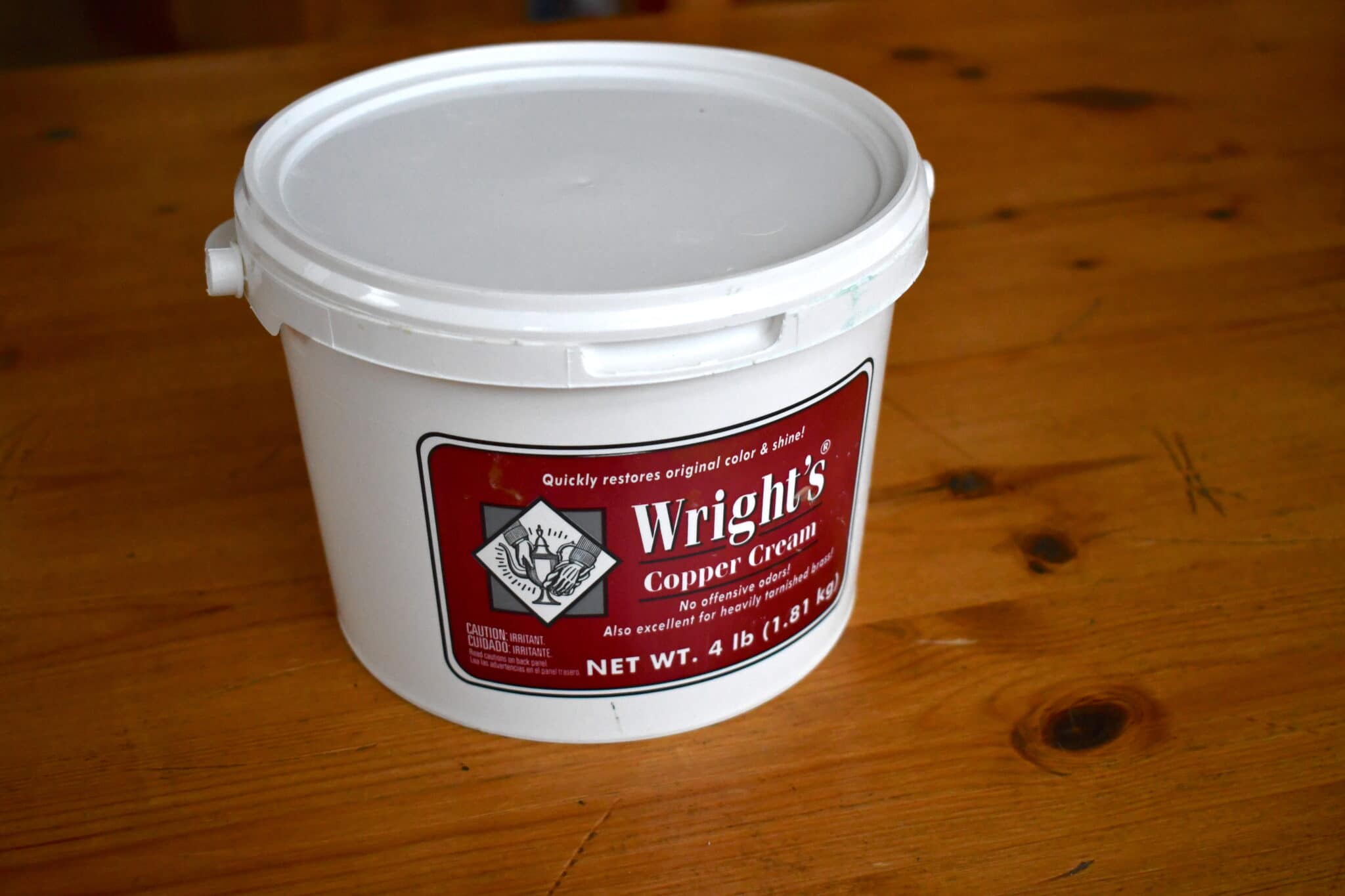
I’m adding a recommendation for Wright’s Copper Cleaner because I’ve come to realize it’s better than Bistro in certain situations.
My first recommendation for copper cleaner (that is, a substance to remove tarnish from copper) was Bistro because it is the least prone to scratch copper when you use it. Copper cleaners combine an acid to dissolve the chemical compounds of tarnish with an abrasive to help dislodge the tarnish from the copper so it can be rinsed away. The upside of the abrasive is that it makes the copper cleaner work much better, but the downside is that the abrasive is also scraping the copper a little bit and can leave visible scratches. My recommendation for Bistro is based on the small diameter of its abrasive grains and the lesser likelihood that it will scratch copper; the abrasives in Wright’s are larger and harder, and create a greater likelihood of scratching copper.
But the benefit of the heavier abrasives in Wright’s is that they work really well on tough tarnish — better than Bistro — and in certain situations I think Wright’s is the better choice.
Here’s how I am using them:
- I use Wright’s for tough tarnish, when it is more important to me to get the tarnish off than it is to preserve the mirror shine. For example, I use Wright’s on my daily use copper because the mirror shine it had when it was new is long gone. I have also used Wright’s to great effect on a few big pieces I bought unrestored; I’ve also used Wright’s to attack small spots of heavy tarnish.
- I use Bistro when I want to preserve a piece’s shine. Bistro is great to touch up display pieces, or to freshen up a piece before I photograph it for a post.
Which one is right for you depends on the kind of copper person you are.
- If all your copper is working copper, Wright’s is going to be perfect for you. Working copper picks up scratches pretty quickly; on the infrequent occasions when I clean the tarnish off my working pans, they look gorgeous from a couple feet away but up close the copper is criss-crossed with tiny scratches. In my opinion it’s not worth worrying about whether Wright’s is going to lay down a few more.
- If you’ve gone to the trouble to have pieces restored, and you don’t cook with them very often, use Bistro. It will help preserve the mirror shine you paid so much to achieve.
- For your unrestored “diamonds in the rough,” use Wright’s to give them their initial clean-up. It will be much faster than using Bistro. My experience is also that unrestored pieces were rarely polished before they were left in someone’s barn or basement (or wherever) so there’s not likely to be a perfect mirror finish hidden under all that tarnish.
- If you have a mix of working and display pieces, consider using both Bistro and Wright’s as suggested above. When you’re cleaning a piece, start off with Bistro and if it’s not working, switch to Wright’s. I also sometimes use Wright’s to spot clean a tough patch of tarnish that isn’t yielding to Bistro.
Can’t decide? You could go with either one if you adjust your technique to accommodate its characteristics.
- Bistro is gentle, so for tough tarnish, you may need to compensate with more time and physical pressure. More time means repeated applications, or letting the Bistro sit in place for thirty seconds or so to give the acids longer contact.
- Wright’s is strong, so to prevent scratching a polished finish, you may need to compensate with a gentler touch. Rub the Wright’s in circles, not in a straight-line back-and-forth, as circles are less likely to leave long scratches that appear more prominent.
Hope this helps! As above, I use them both. Here are my two economy-sized tubs!
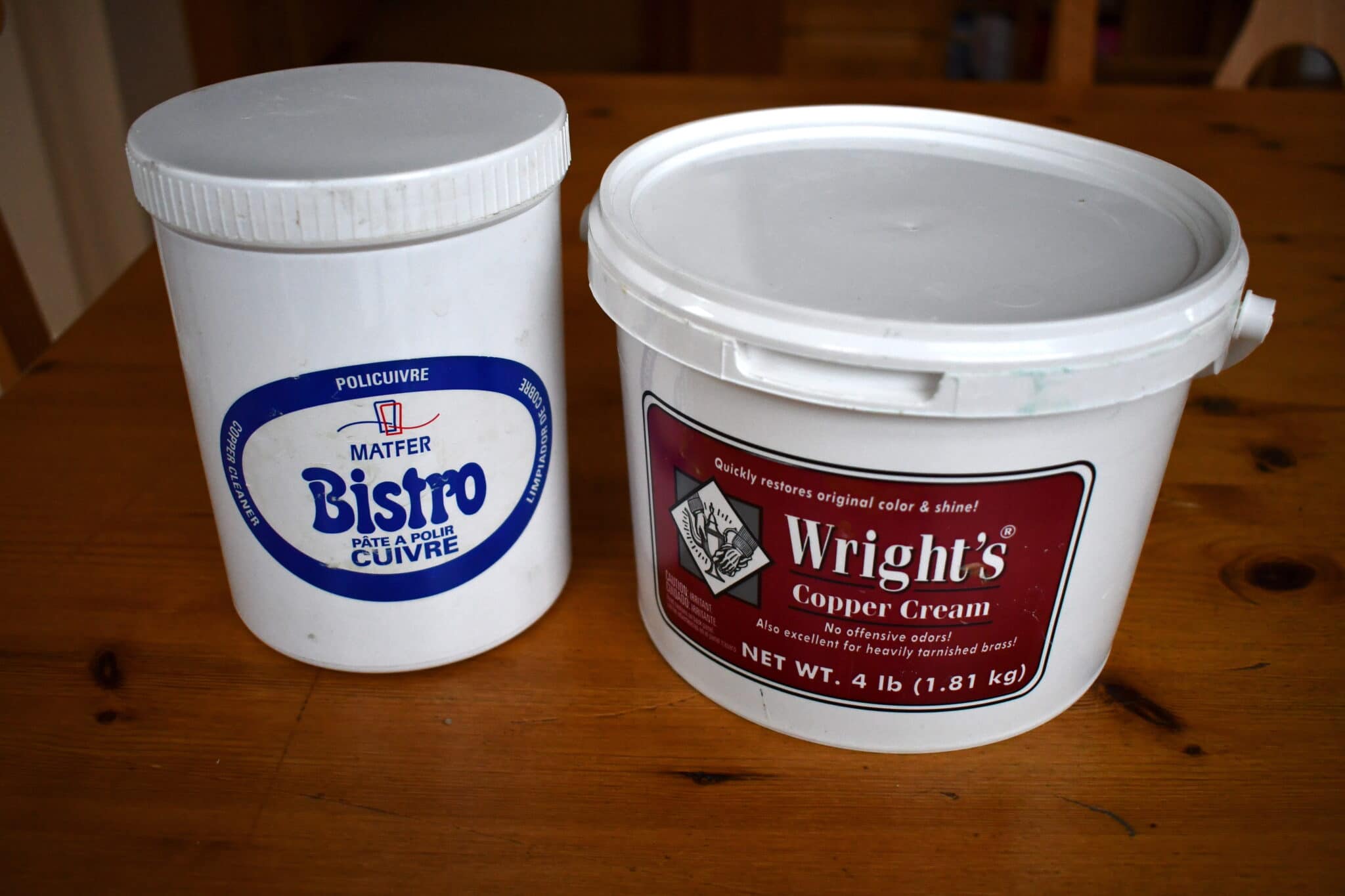
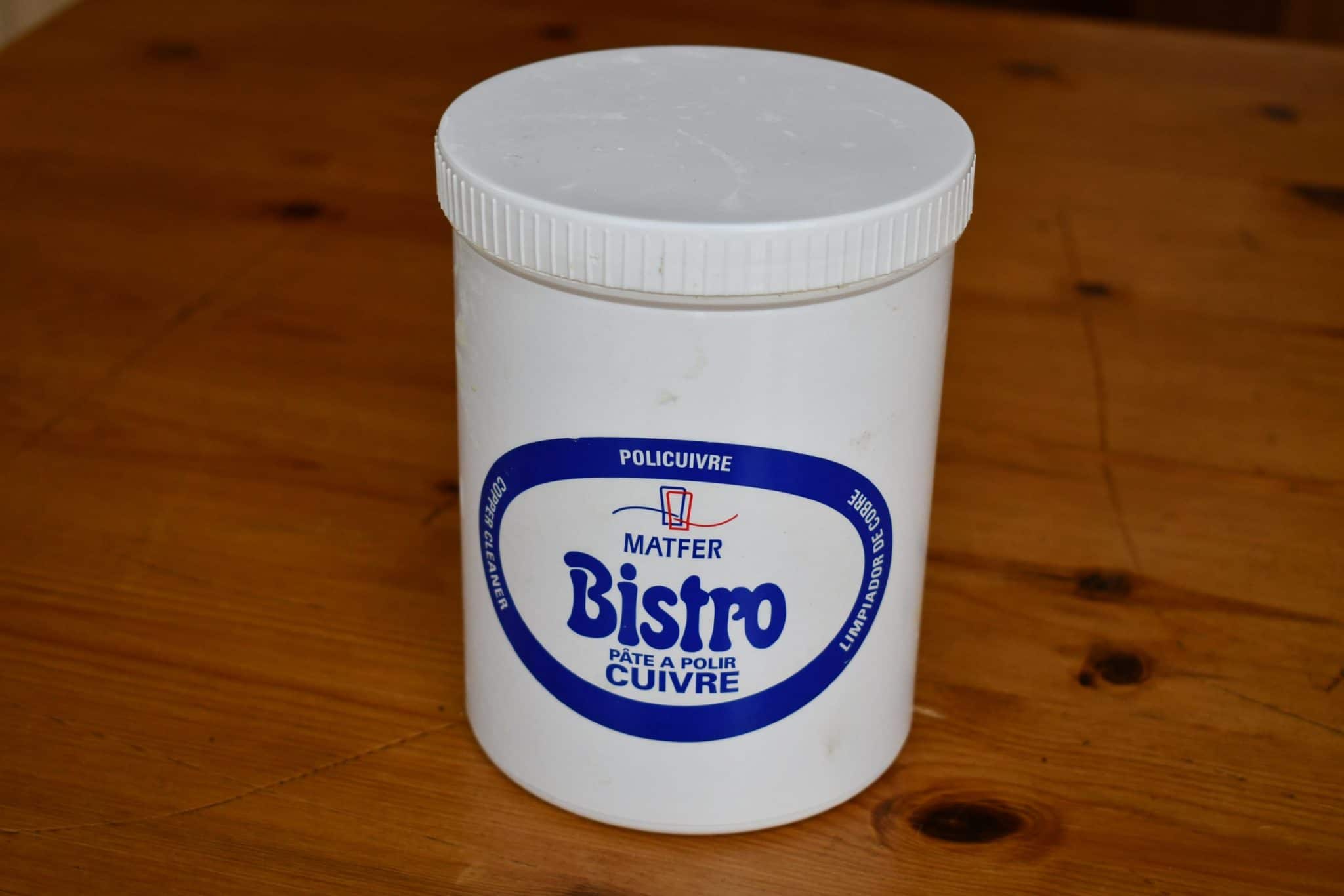
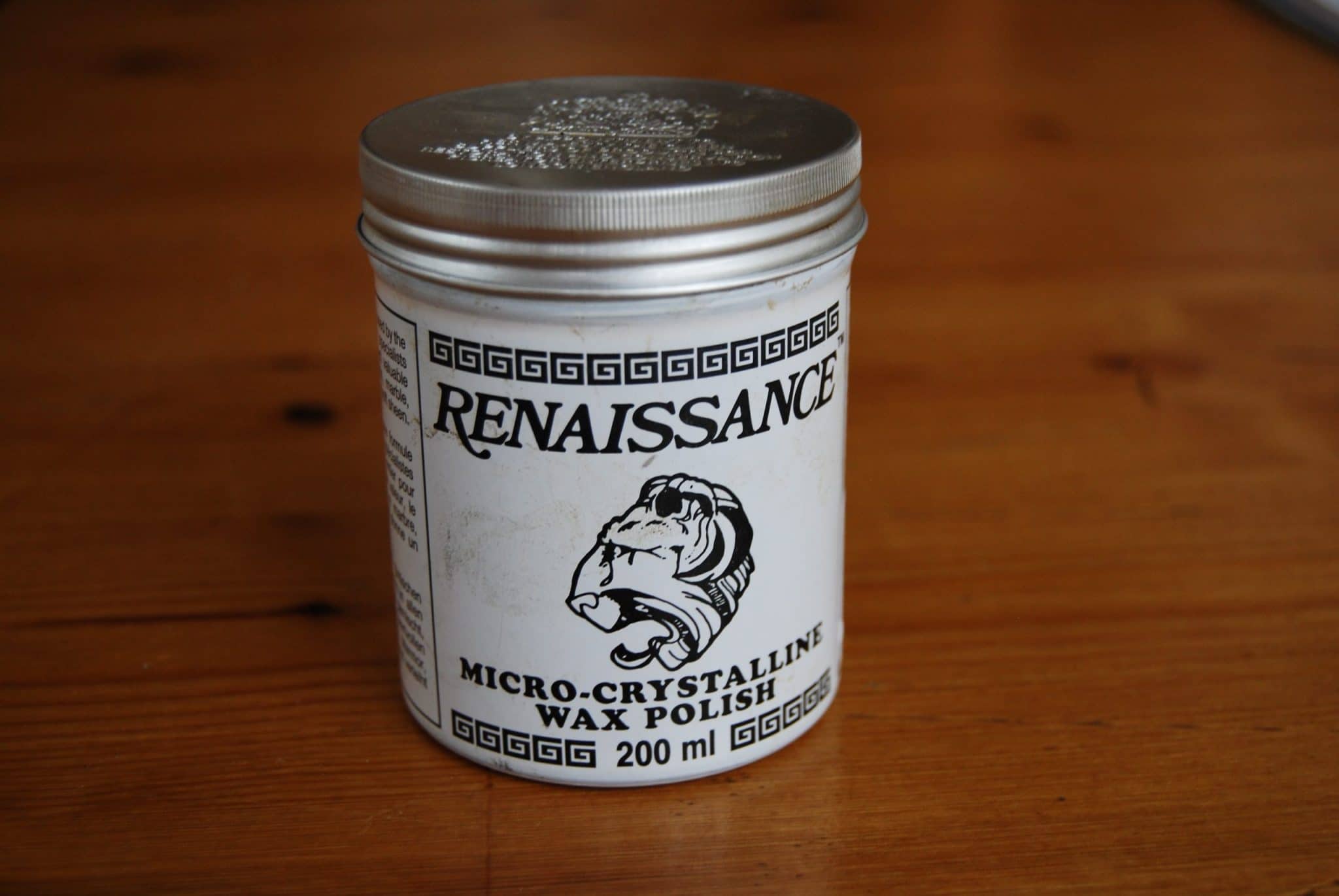
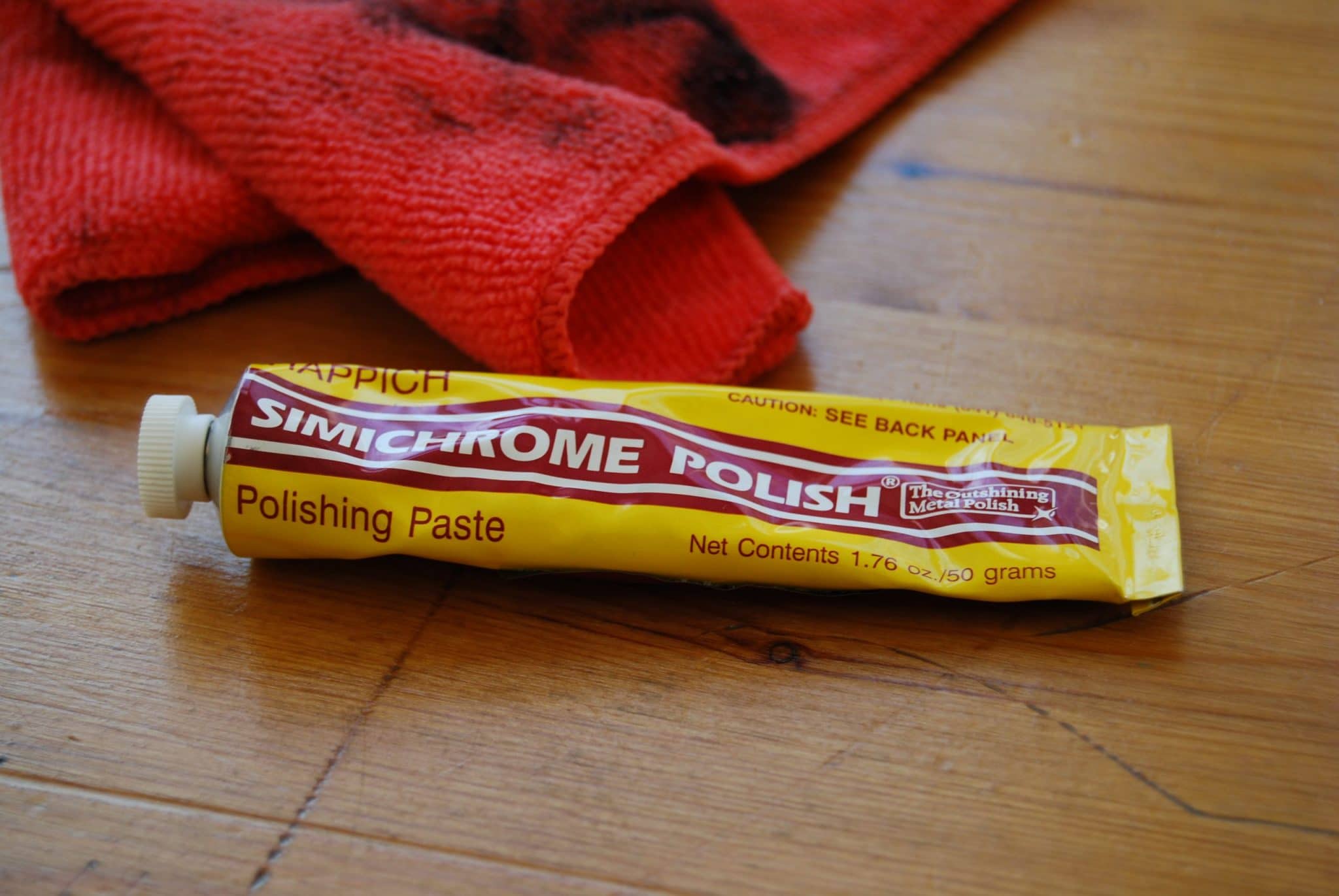
It is also worth bearing in mind that that the cloth used makes a considerable difference. For a heavily tarnished neglected pan I use denim from worn out jeans, it’s coarse texture fills with the chosen polishing paste and really tears into the tarnish. Generally for maintenance cleaning soft cotton, old tee shirts being ideal and use a fresh piece as they become dirty or they will scratch.
Liquid metal polish used gently with a very soft cloth will eventually restore a mirror finish.
Do you have any experience with Mauviel Copperbrill copper cleaner? I read good things about it but have not been able to get any to try since “the pandemic”. I believe it’s made in France.
Hey Marie! If you can’t find Copperbrill, see if you can find Bistro instead — I believe they’re the same product (though Bistro can be less expensive in my experience).
Thank you!
Having used both, I would rate Copperbrill equal to Bistro for polishing copperware. They both do a very nice job.
Thank you for the info. I just found your website and enjoy reading and learning from it.
Hi Marie, sorry for the confusion! I am also just someone who reads and enjoys this wonderful website and was offering my opinion on the two French polishes.
Ha!! Steve, I appreciate you chiming in!
As far as I know, Bistro and Copperbrill are the same product, labeled for Matfer and Mauviel, respectively. They are both great for preserving the finish of copper. I use them for my restored pieces.